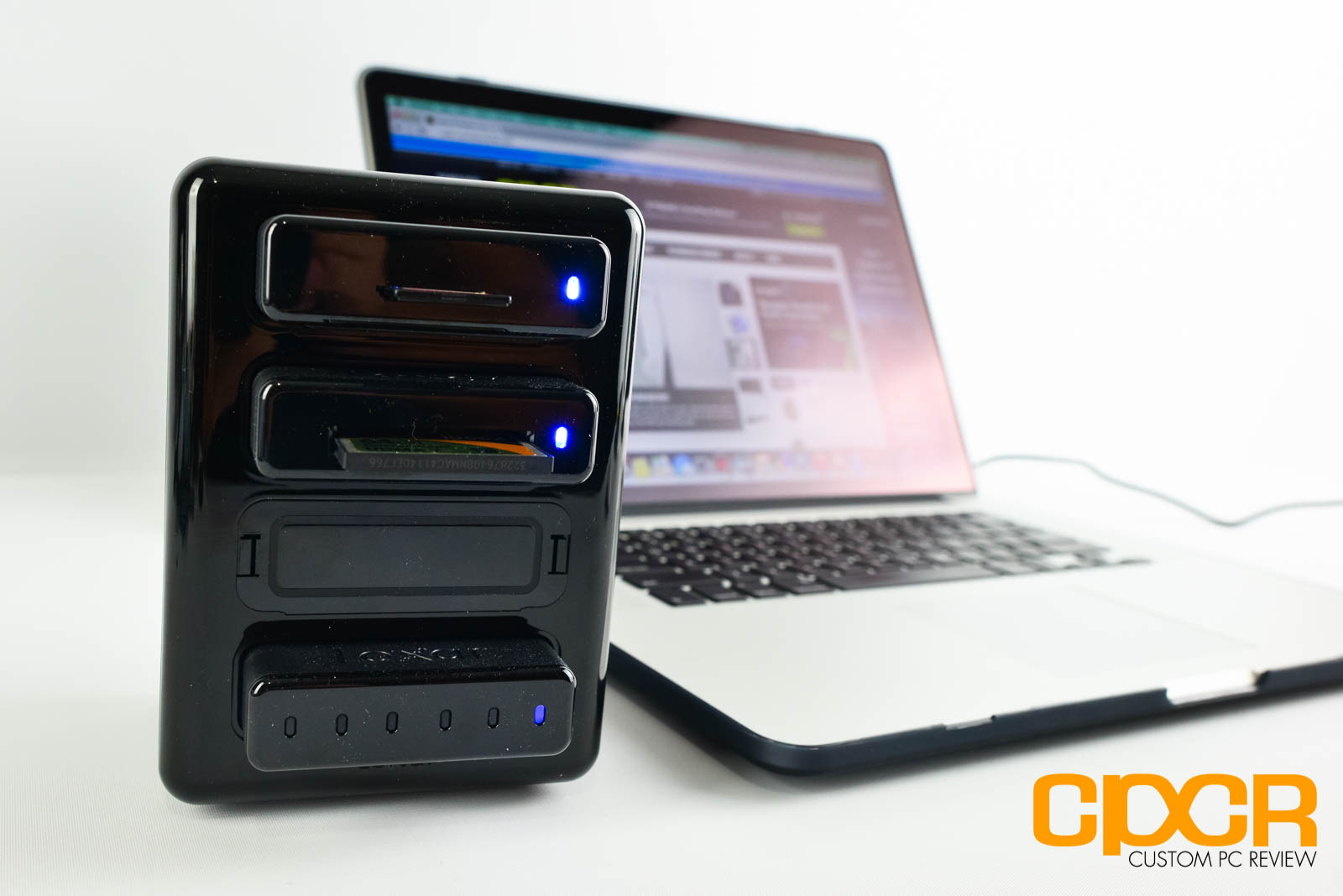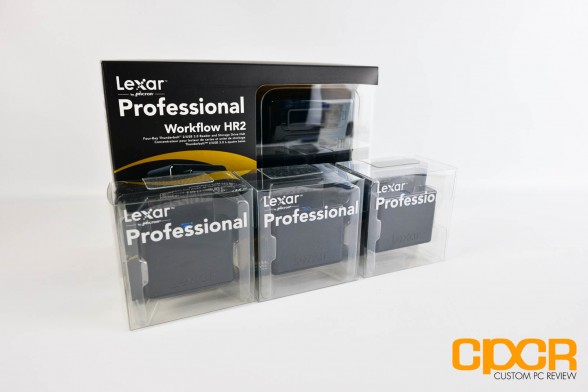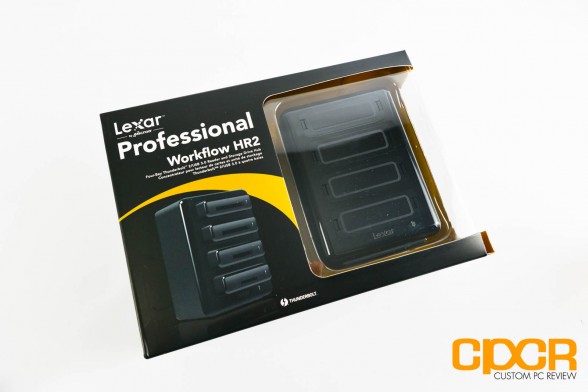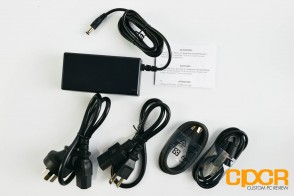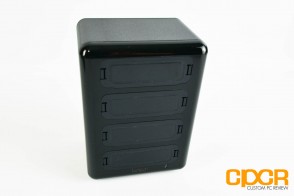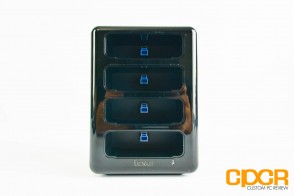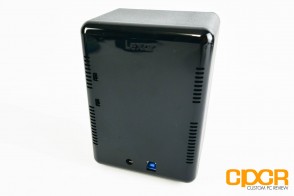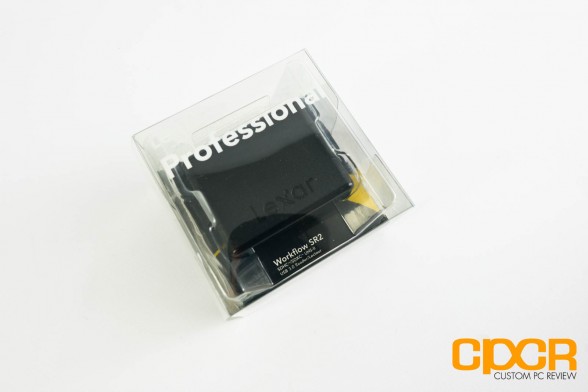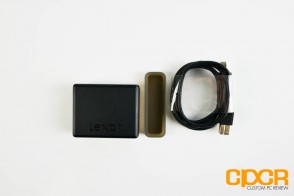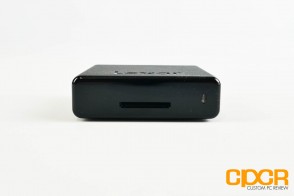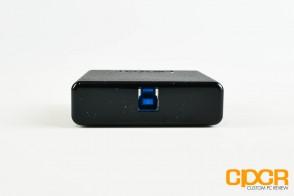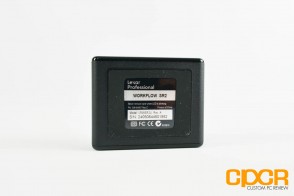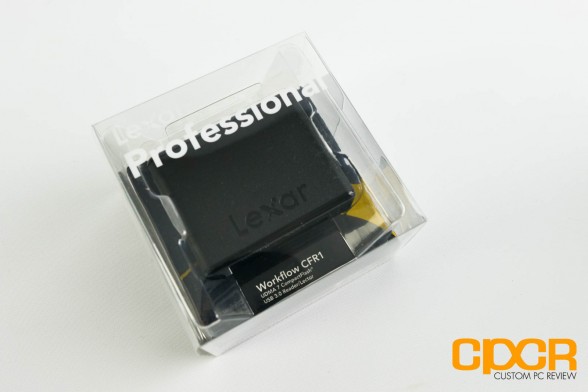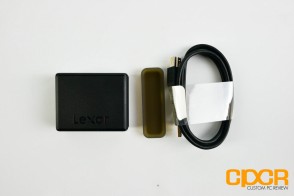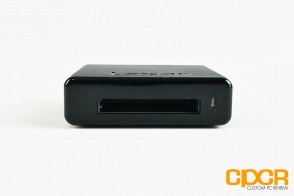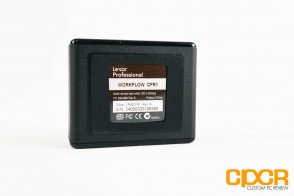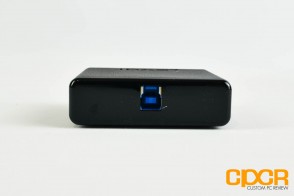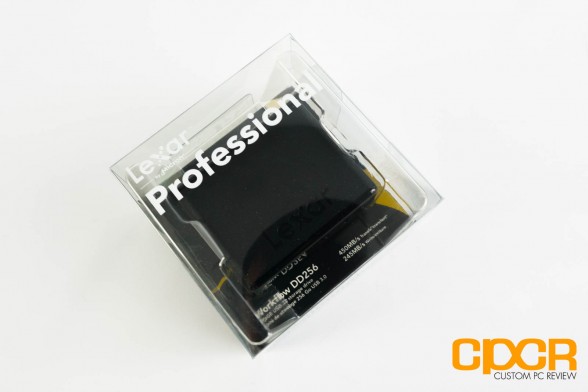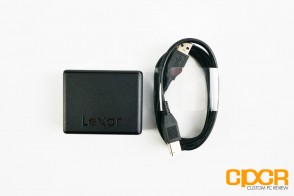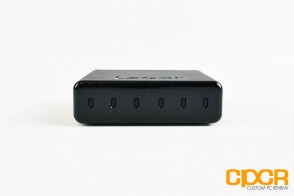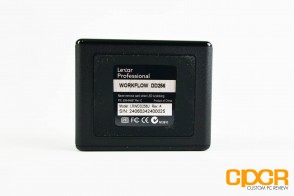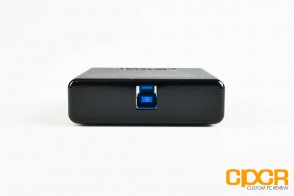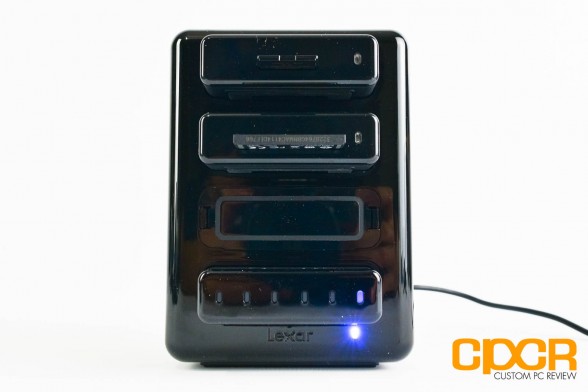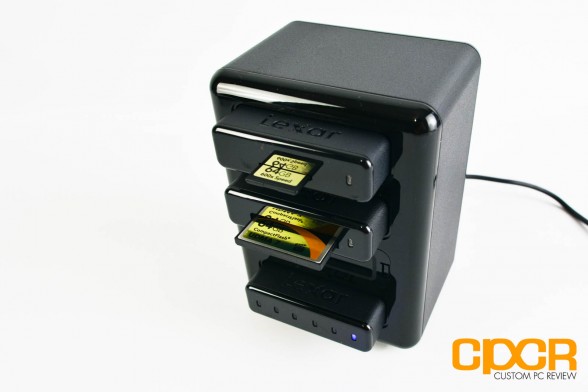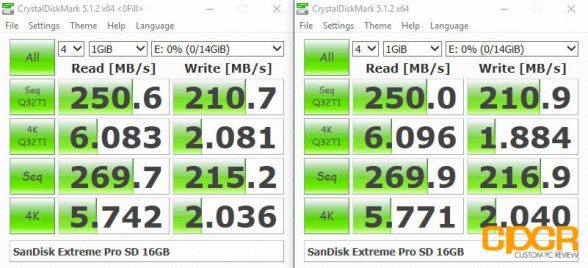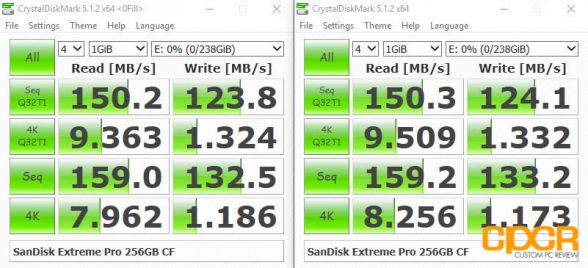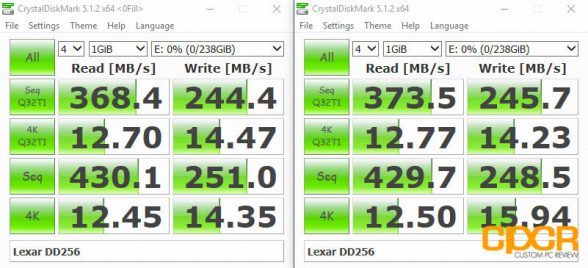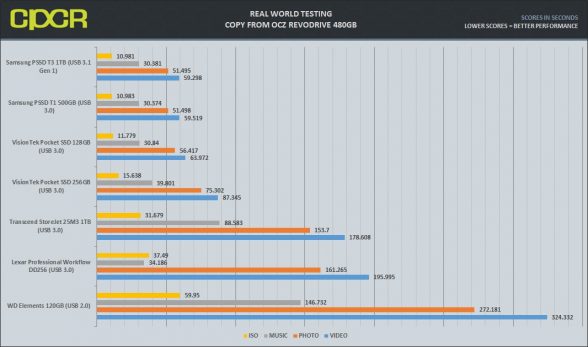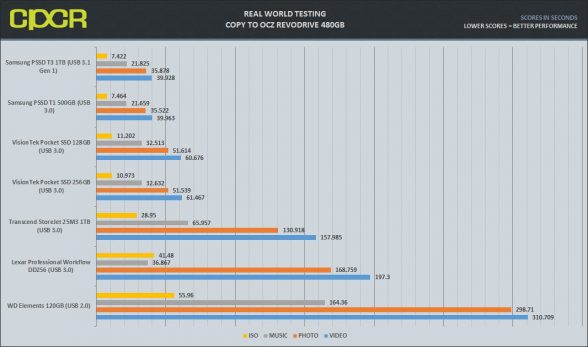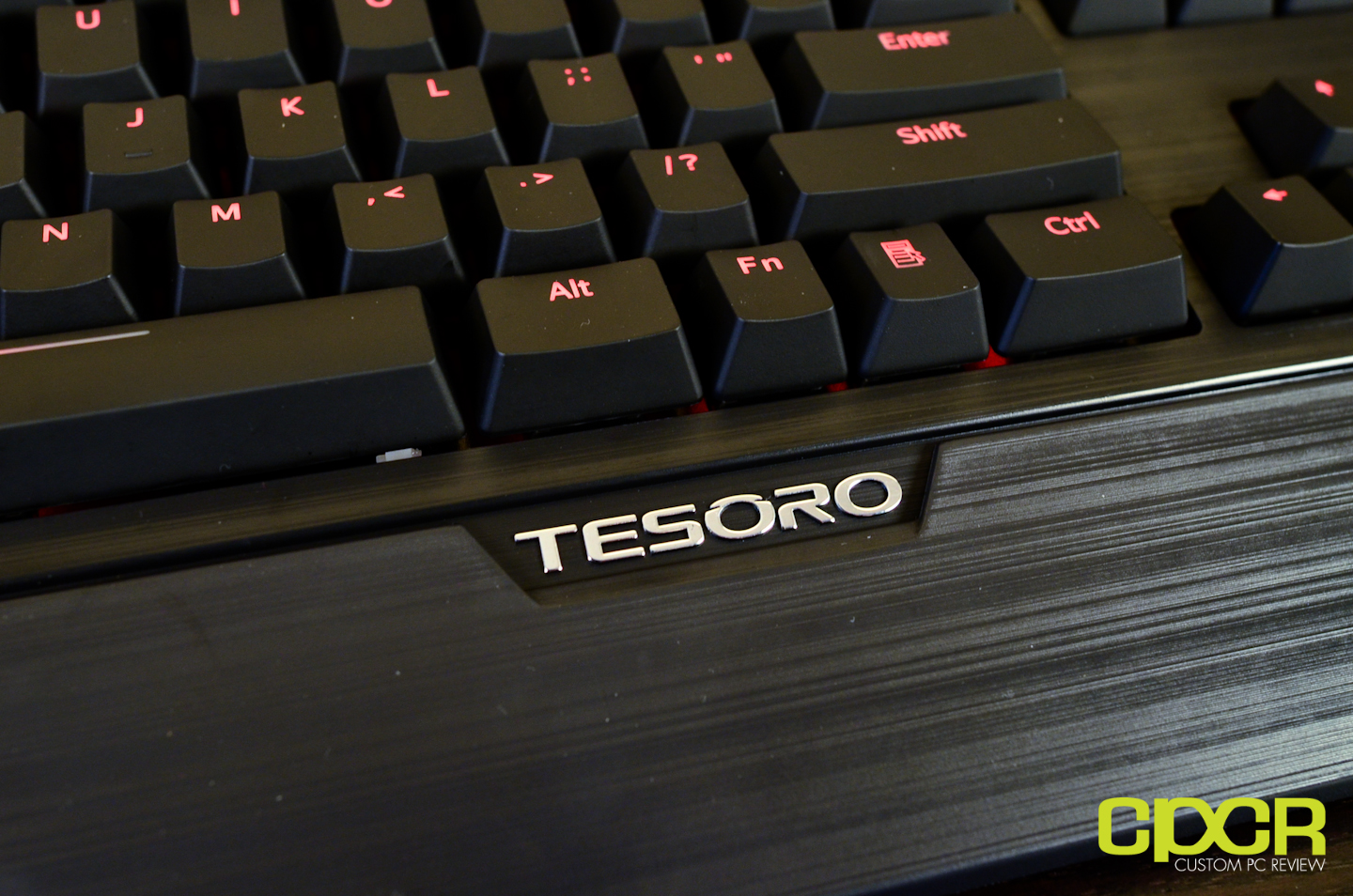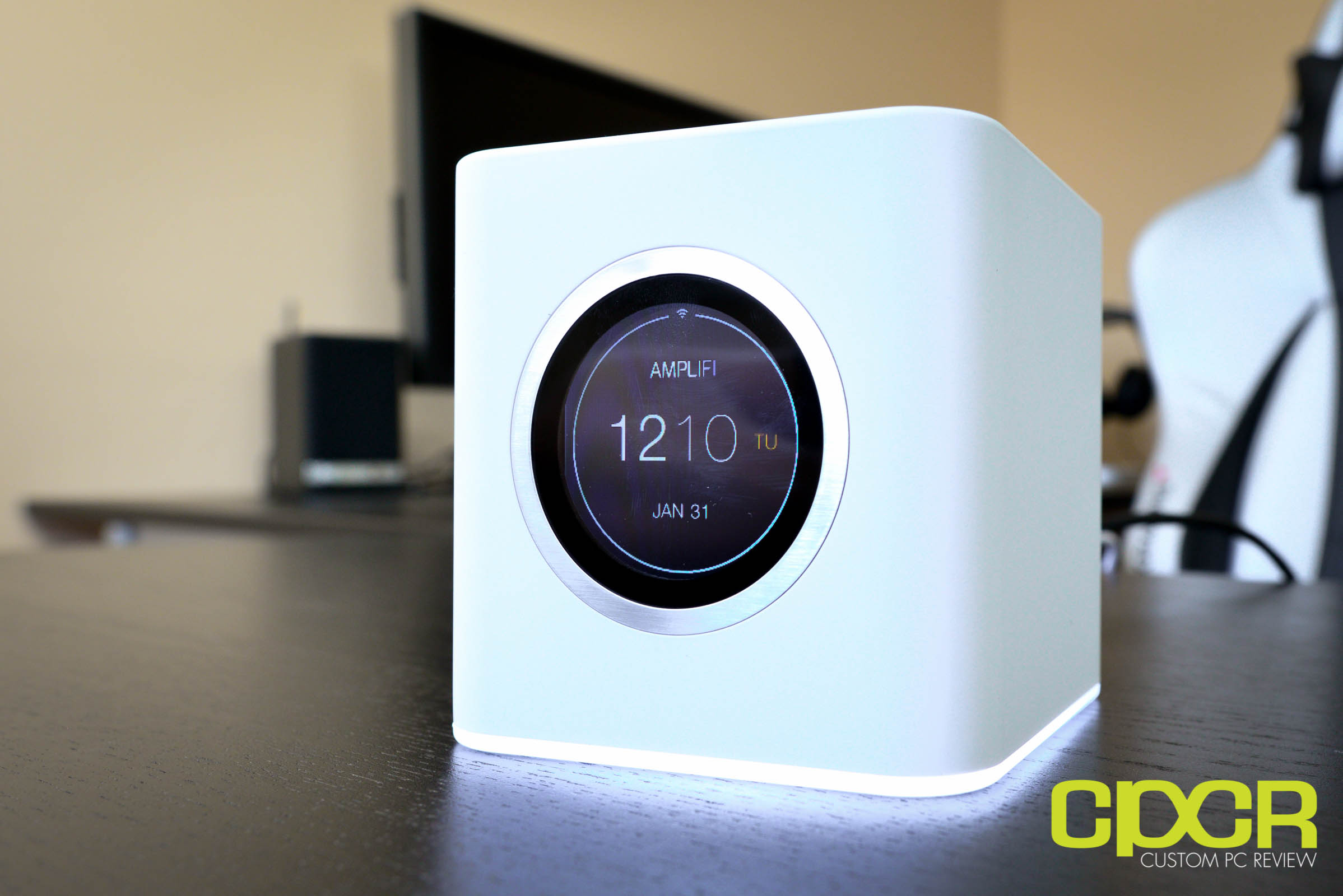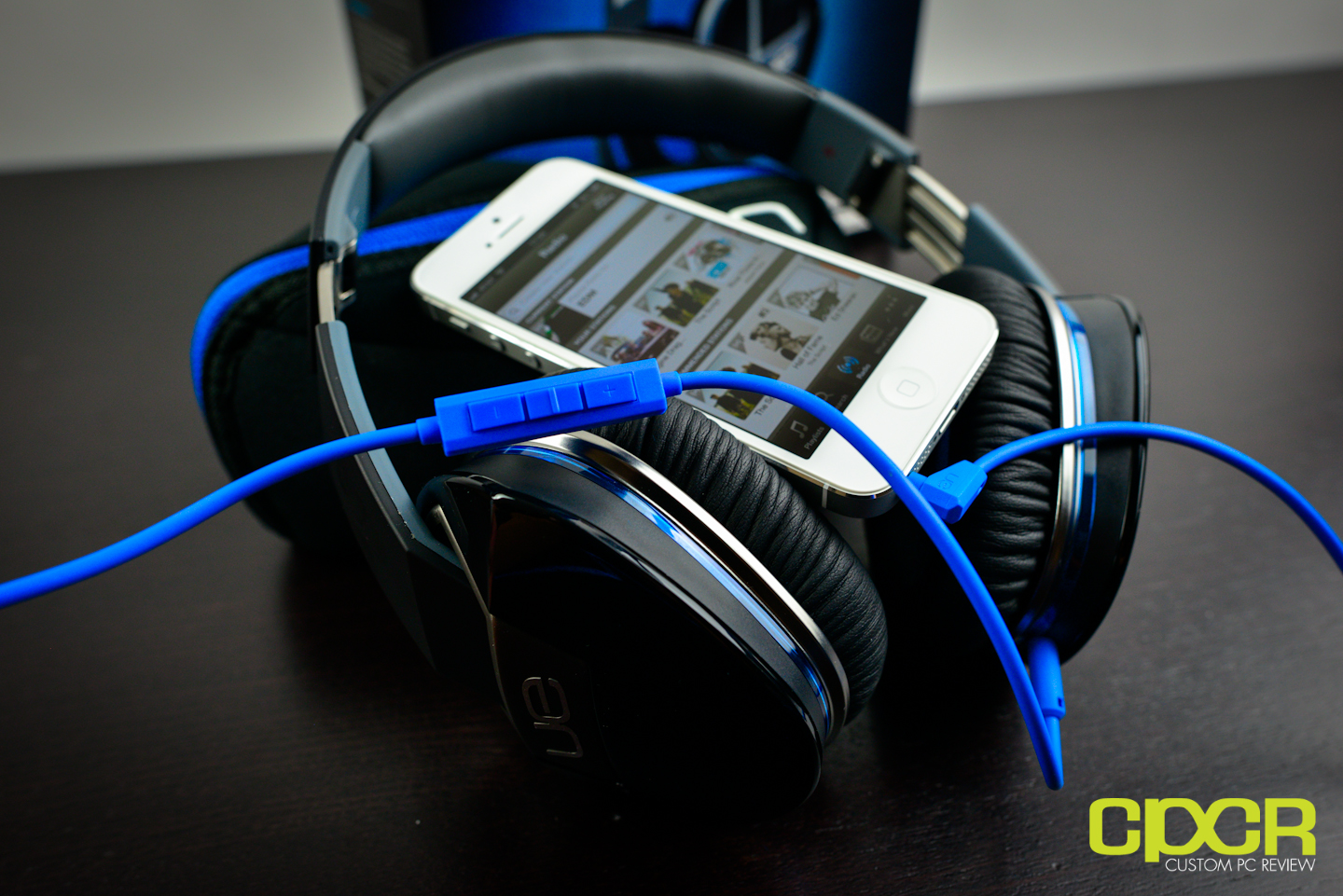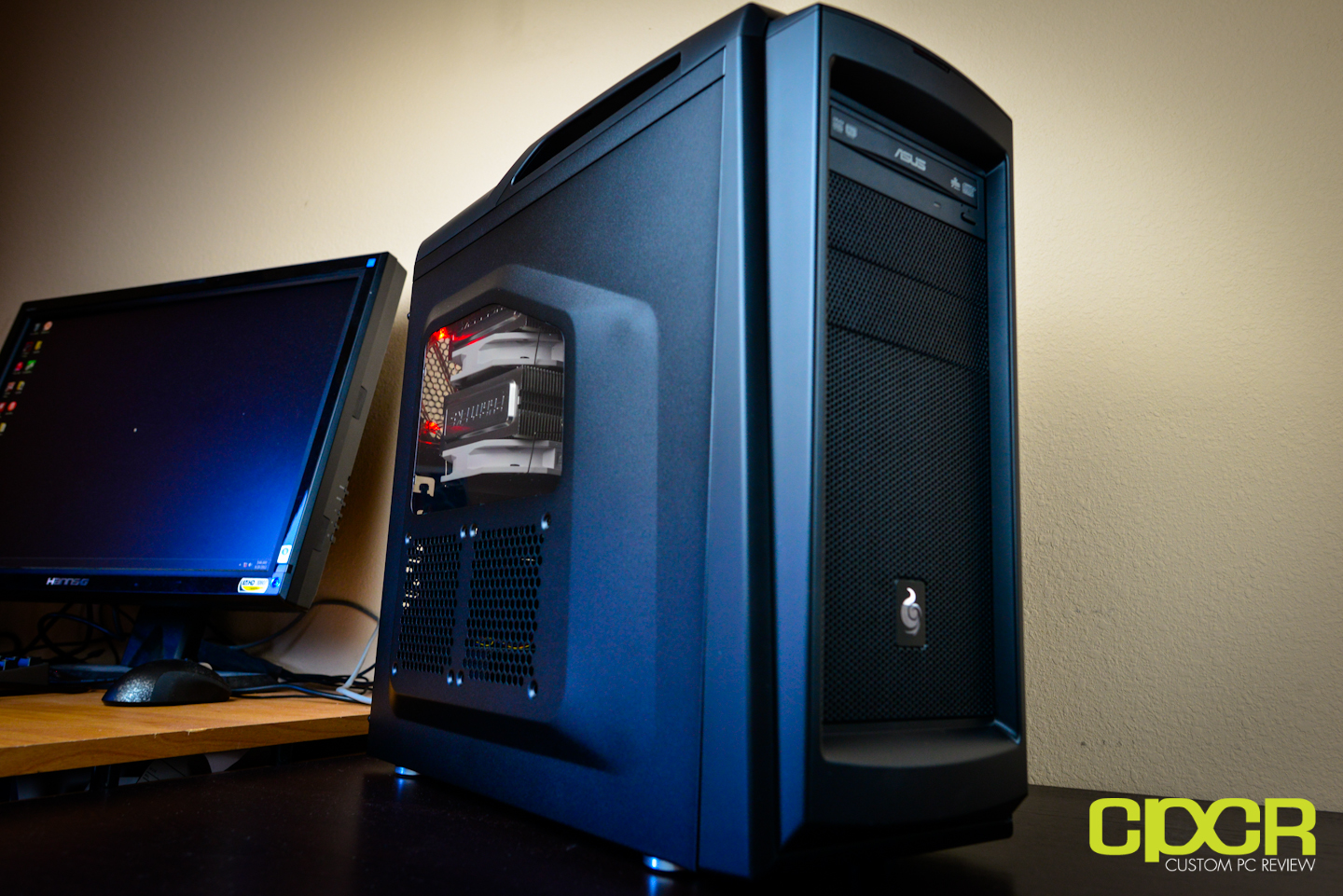[section label=”Introduction”]
System for the Content Creation Professional
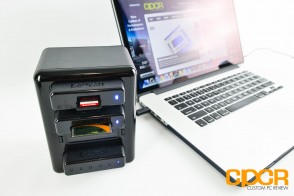 If you’re like us, you’re probably always on the lookout for a good workflow system to get images from either your camera or videocamera into the computer. With all the different devices out there demanding different types of memory cards, you’re bound to end up having several different memory cards with several different memory card readers hooked up to several different USB ports. Unfortunately, this is a hassle especially when on the road as most laptops can only spare at one to two USB ports at most.
If you’re like us, you’re probably always on the lookout for a good workflow system to get images from either your camera or videocamera into the computer. With all the different devices out there demanding different types of memory cards, you’re bound to end up having several different memory cards with several different memory card readers hooked up to several different USB ports. Unfortunately, this is a hassle especially when on the road as most laptops can only spare at one to two USB ports at most.
To solve this problem, Lexar introduced the Lexar Professional Workflow lineup of products which will make life a lot easier for content creators. At the center of the Lexar Professional Workflow system is a hub, which accommodates modules. These modules consist of either memory card readers, external storage drives or USB hubs. Each module is independent on its own, but will work with the hub when hooked onto one.
Let’s take a closer look.
[section label=”A Closer Look”]
A Closer Look at the Lexar Professional Workflow
Lexar sent us several popular products in their Professional Workflow series of products. For our review today, we received the Professional Workflow HR2, SR2, CFR1, and DD256. Let’s take a closer look at each of these products.
Lexar Professional Workflow HR2
First we have the packaging for the Lexar Professional Workflow HR2. The Lexar Professional Workflow HR2 is a hub device where you can install up to 4 Lexar Professional Workflow modules. While it’s not mandatory to purchase a Lexar Professional Workflow hub, the hub is what makes the Lexar Professional Workflow system unique.
Included in the packaging is a some documentation, a USB 3.0 cable, a Thunderbolt cable, a 12V 5A power adapter, two power cables (one for US power outlets and one for foreign power outlets), and the Workflow HR2 itself.
Opening up the covers for the module bays, we can see that each one has a USB 3.0 Type-B plug which plugs into the USB 3.0 Type-B port on the modules. At the rear of the Workflow HR2, there’s 2x Thunderbolt 2 ports, a USB 3.0 port, and a power port.
Lexar Professional Workflow SR2
Here’s a look at the packaging for the Lexar Professional Workflow SR2. The Lexar Professional Workflow SR2 is a USB 3.0 SD Card Reader module.
Included in the packaging we get the Workflow SR1, a rubber cover and a USB 3.0 cable. The entire device is relatively simple. There’s a SD card slot up front and a USB 3.0 Type-B port in the back. At the bottom is some rubber materials to keep the unit in place.
Lexar Professional Workflow CFR1
Here’s a look at the packaging for the Lexar Professional Workflow CFR1. The Lexar Professional Workflow CFR1 is a USB 3.0 CF Card Reader module.
It’s a simple device, so included in the package is a USB 3.0 cable, a rubber cover and the CFR1 itself. At the front of the device is a CF card slot and at the rear is a USB 3.0 Type-B port. At the bottom is some rubber materials to keep the unit in place.
Lexar Professional Workflow DD246
Here’s a look at the packaging for the Lexar Professional Workflow DD256 Portable SSD. The Lexar Professional Workflow DD256 is a 256GB USB 3.0 Portable SSD module.
Again, this is a very simple device. Included in the packaging is only the DD256 and a USB 3.0 cable. The front of the unit contains a bunch of LED bars which indicate how much storage is used when powered on. The rear of the drive contains a USB 3.0 Type B port. At the bottom is some rubber materials to keep the unit in place.
Here’s a look at the Lexar Professional Workflow DD256 powered on. The bars indicate how much capacity has been used and since we haven’t put much data on the drive yet, only one of the LEDs light up.
Lexar Professional Workflow System Set-Up
Here’s a look at our Lexar Professional Workflow system fully assembled. Since we only have three modules at this time, we have one open module slot which can accommodate an additional module down the road. Each of the modules can be removed individually and used as standalone devices.
Once the Lexar Professional Workflow HR2 hub is plugged into the system, any modules plugged into the hub will show up as individual drives on the system. From there, files may be copied to and from the memory cards or the storage drive simultaneously. Files can be copied between the modules as well.
[section label=”Performance”]
Testing Setup
| System | CyberPowerPC Gamer Xtreme 4200 |
|---|---|
| CPU | Intel Core i7-4770K |
| Motherboard | ASUS Z87-A |
| Memory | Kingston HyperX Genesis 16GB DDR3 2133MHz |
| Graphics | Intel HD4600 Graphics |
| Storage | OCZ Vertex 4 256GB |
| Power Supply | Corsair HX650 |
| Case | HSPC High Speed Tech Station |
| Optical Drive | ASUS OEM DVD Drive |
| Operating System | Windows 8 64 bit & CentOS 6.4 |
Special thanks to CyberPowerPC, Kingston, OCZ Storage Solutions and HSPC for sponsoring our test bench!
For testing, we plugged the Lexar Professional Workflow HR2 along with its modules into our testbench via the Intel USB 3.0 ports. We also tested the Lexar Professional Workflow HR2 with the Thunderbolt port in our MSI GS40 Phantom. The difference between Thunderbolt 2 and USB 3.0 is that Thunderbolt 2 is able to reach up to 20Gb/s while USB 3.0 has a maximum theoretical speed of 5Gb/s. However, unless you’re transferring data through multiple high speed memory cards (CFast, SD UHS-II, CF UDMA 7) simultaneously, you’ll unlikely notice any differences in real world use.
Lexar Professional Workflow Performance
Lexar Professional Workflow SR2
For testing the Lexar Professional Workflow SR2, we plugged in a SanDisk Extreme Pro UHS-II 16GB SD Card.
Crystal Disk Mark 5.1.2
Lexar Professional Workflow CFR1
For testing the Lexar Professional Workflow CFR1, we plugged in a SanDisk Extreme Pro 256GB UDMA7 CF Card.
Crystal Disk Mark 5.1.2
Performance Analysis
In our testing with the SR2 and the CFR1, each memory card was able to reach maximum performance as both memory card reader modules fully support the latest standards.
Lexar Professional Workflow DD256
Crystal Disk Mark 5.1.2
Real World Testing
Since it’s difficult to translate what 450 MB/s, 250 MB/s, 120 MB/s, etc. means in minutes and seconds in real world applications, we’ve also prepared several real world testing scenarios transferring files to and from the drive, and recording the amount of time necessary to complete the operations.
In this test, we’ll be transferring four different sets of files:
- ISO – Single 1x Windows 7 x64 ISO totaling 2.2GB
- Music – 1,007x MP3’s totaling 5.0GB
- Photo – 443x Sony ARW RAW pictures totaling 10.0GB
- Video – 44x x264 1080p MP4 videos totaling 12.0GB
Copy From
In our copy from test, we’ll be copying our filesets one at a time from our test drives to an OCZ RevoDrive 350 to reduce any chance of the host bottlenecking performance. The OCZ RevoDrive 350 is a PCIe Gen 2 x8 SSD capable of up to 1,800 MB/s sequential reads and 1,700 MB/s sequential writes.
Copy To
In our copy to test, we’ll be copying our filesets one at a time from the OCZ RevoDrive 350 to our test drives.
Performance Analysis
In our testing with the DD256, the drive was able to reach a maximum performance of 450MB/s sequential reads and 251MB/s sequential writes. Unfortunately, this is much lower performance than possible when compared to some of the newer external SSDs such as the Samsung PSSD T3 we reviewed recently.
In real world testing, the DD256 didn’t fare so well either. Making quick, small transfers were fast, but when copying lots of files for extended periods of time, performance drops drastically. In fact, in most of our tests, the DD256 performed worse than the Transcend StoreJet 25M3 1TB, which is powered by a HDD.
[section label=”Conclusion”]
Lexar Professional Workflow Conclusions
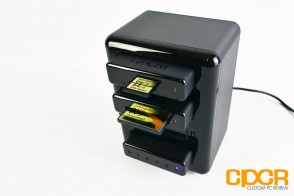 I’ve been using the Lexar Professional Workflow lineup of products for almost a year now and I think the Lexar Professional Workflow is definitely one of the best memory card workflow systems on the market. In fact, looking around online, the Lexar Professional Workflow may actually be the only system of its kind in the market. There are just no other alternatives out there.
I’ve been using the Lexar Professional Workflow lineup of products for almost a year now and I think the Lexar Professional Workflow is definitely one of the best memory card workflow systems on the market. In fact, looking around online, the Lexar Professional Workflow may actually be the only system of its kind in the market. There are just no other alternatives out there.
Right from the start, the system is truly plug and play. Set up was very easy, operation was very easy and performance was very good. The only issue I had with the entire system is that the DD256 storage module’s performance was sub-par at best. Those who need an external storage solution will be much served by something like a Samsung PSSD T3.
The most innovative design aspect of the Lexar Professional Workflow is of course the modular design of the system. This allows you to keep the modules sitting in their slots when being used somewhere stationary such as at a workstation, but individual modules can be quickly removed and taken on the road when needed. The module system is also great since it allows Lexar to sell modules for practically every type of memory card on the market. Lexar also constantly updates the modules for newer memory cards and memory card standards so the workflow system isn’t likely to go obsolete anytime soon.
Lexar currently offers the following hubs:
- Lexar Professional Workflow HR1 (4-bay Hub, USB 3.0)
- Lexar Professional Workflow HR2 (4-bay Hub, Thunderbolt 2/USB 3.0)
Lexar currently offers the following modules:
- Lexar Professional Workflow SR2 (SD UHS-II USB 3.0 Reader)
- Lexar Professional Workflow UR2 (microSDHC/microSDXC UHS-II USB 3.0 Reader)
- Lexar Professional Workflow CFR1 (CompactFlash USB 3.0 Reader)
- Lexar Professional Workflow XR2 (XQD 2.0 USB 3.0 Reader)
- Lexar Professional Workflow CR1 (CFast 2.0 USB 3.0 Reader)
- Lexar Professional Workflow CR2 (CFast 2.0 Thunderbolt/USB 3.0 Reader)
While the Lexar Professional Workflow line is generally very good (with the exception of the DD256), the biggest drawback with the Lexar Professional Workflow lineup is the cost. As of time of writing, the Lexar Professional Workflow HR2 runs approximately $248.50, the Lexar Professional Workflow SR2 runs approximately $24.50, the Lexar Professional Workflow CFR1 runs approximately $23.99, and the Lexar Professional Workflow DD256 runs approximately $84.97. This pegs the entire workflow system as reviewed today at just under $400. While the individual modules themselves are just slightly expensive, the Professional Workflow HR2 hub is very expensive for essentially a device that’s a hub for other devices. That said, Lexar does offer the Professional Workflow HR1 hub which omits the Thunderbolt 2 ports for a much more reasonable $59.95 so if you don’t have any high speed memory cards, it may be a better option.
Overall I think the Lexar Professional Workflow HR2, SR2 and CFR1 are excellent products for professional content creators who need to be able to quickly and easily offload memory cards to a PC with a modular system that adapts to their needs. As long as the pricetag isn’t an issue, I’d highly recommend it!
Sample provided by: Lexar
Available at: Amazon

